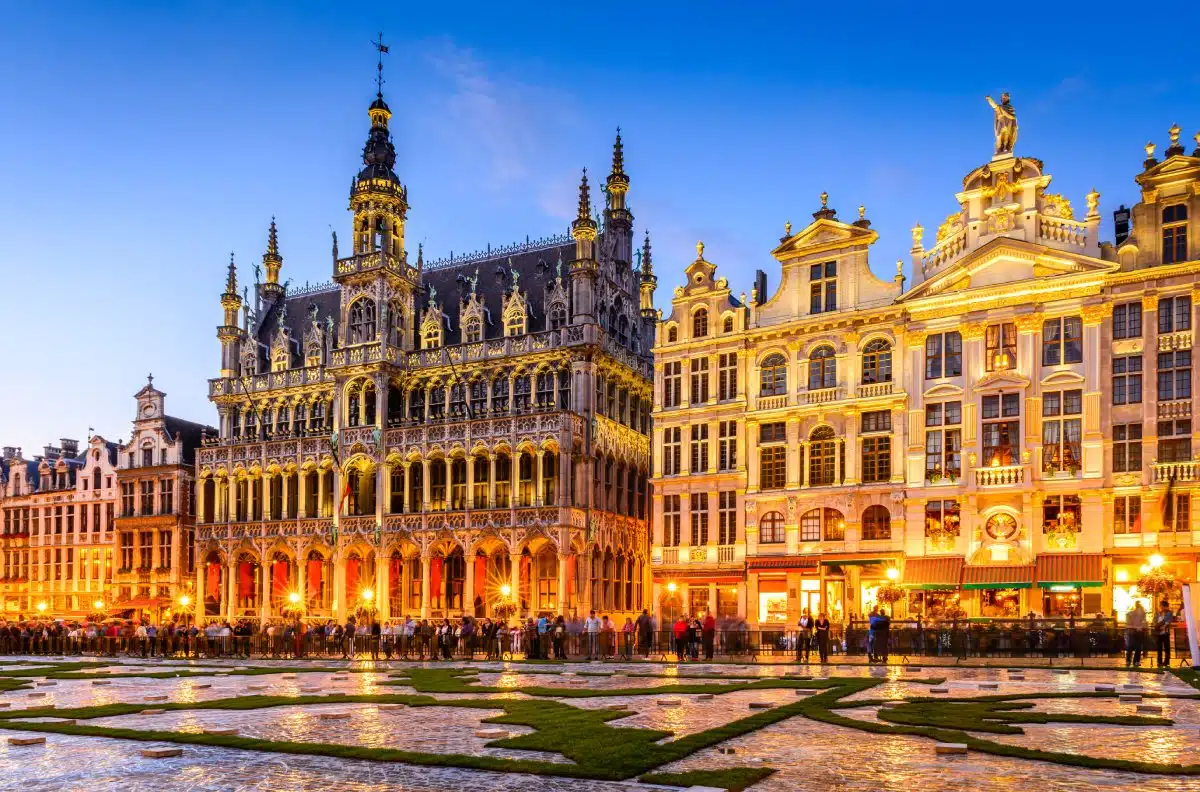Brussels, the capital city of Belgium and the administrative heart of the European Union offers a unique blend of historical charm and contemporary vibrancy. Known for its splendid architecture, world-class museums, and culinary excellence, Brussels is a city where medieval streets and grand squares coexist with sleek modern buildings and lively urban spaces. Brussels invites visitors to explore its many facets, from the iconic Grand Place to the futuristic Atomium, and from exquisite Belgian chocolates to hearty beer and waffles. This guide explores the city’s must-visit attractions, offering insights into each destination’s history, cultural significance, and the best ways to experience them.
Brief History of Brussels

Image Credit: Shutterstock / GaudiLab
Brussels’ origins can be traced back to a small 10th-century fortress town built by a descendant of Charlemagne. Situated on an island in the Senne River, Brussels was ideally located along trade routes between the Rhine and the Seine, which contributed to its growth and prosperity.
By the 12th century, Brussels had developed into a commercial hub, leading to the construction of the city’s first walls and the establishment of the Grand Place, which would become the heart of the city. The 14th and 15th centuries marked a period of artistic and cultural flourishing under the Burgundian dukes, making Brussels a center of the Northern Renaissance.
The city’s fortunes waxed and waned over the subsequent centuries, influenced by various European powers. In the 16th and 17th centuries, Brussels faced destruction during the wars of the Spanish succession but was rebuilt, showcasing splendid baroque architecture. The 18th century brought economic decline under Austrian rule, followed by a brief period of French control under Napoleon.
The 19th century was a turning point for Brussels, as Belgium gained independence in 1830 with Brussels as its capital. This era saw significant urban development, including the Senne River covering, the city’s expansion beyond its medieval walls, and the construction of notable landmarks such as the Royal Palace and the Saint-Hubert Royal Galleries.
The 20th century further transformed Brussels, especially after World War II, as it became the center of international politics by establishing NATO headquarters in 1967 and the European Union’s key institutions. The city expanded its infrastructure and public spaces, embracing modernity while preserving its historical heritage.
Today, Brussels is known for its multicultural vibrancy, historical landmarks, and as a center of European culture and politics. Its history of resilience and adaptation is evident in its architecture, museums, and the cosmopolitan fabric of city life, making it a fascinating destination for visitors from around the globe.
1. The Grand Place
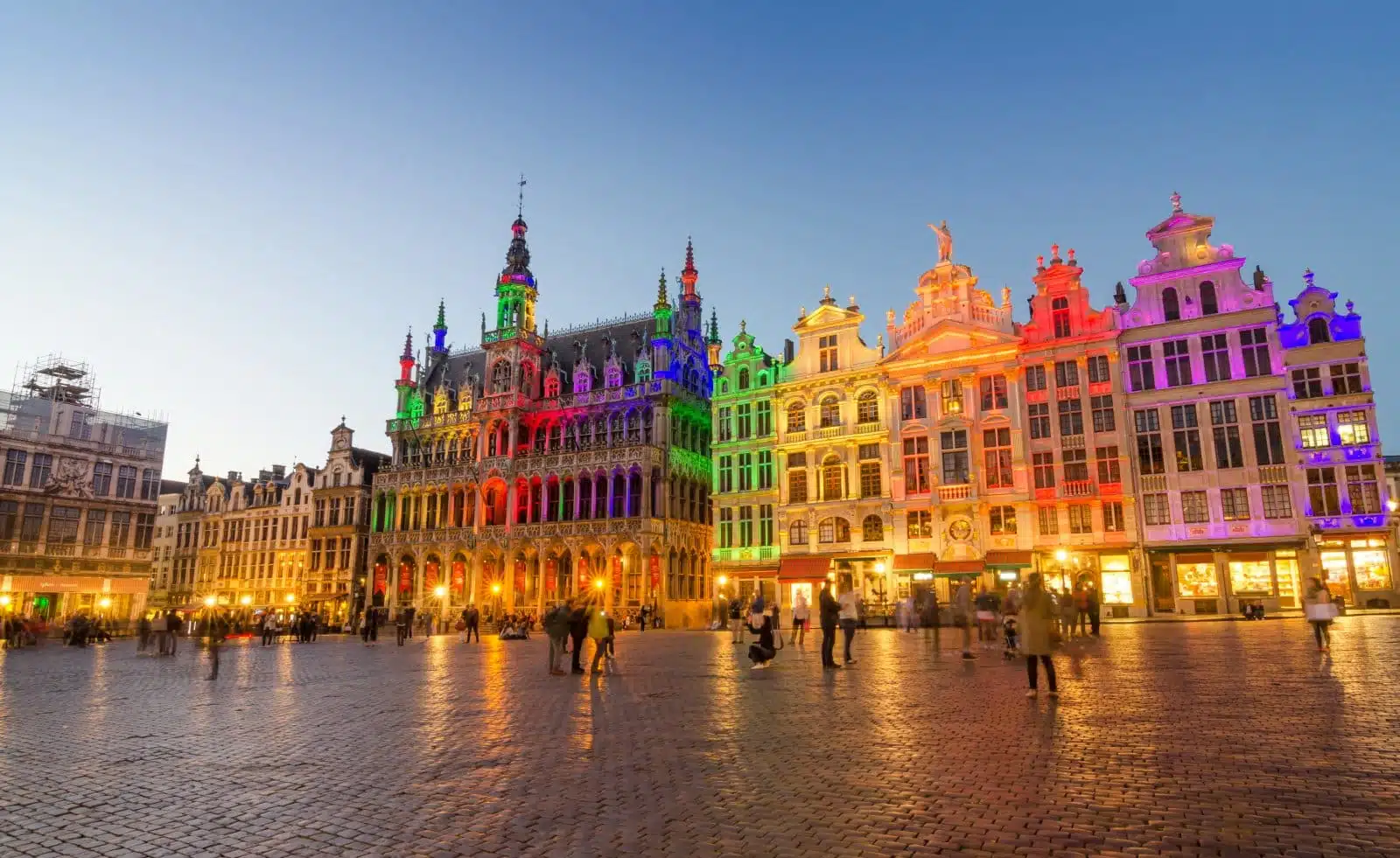
Image Credit: Shutterstock / Sira Anamwong
The Grand Place, or Grote Markt, is the historic heart of Brussels, surrounded by opulent guildhalls, the striking Town Hall, and the King’s House or Maison du Roi. This UNESCO World Heritage site highlights the city’s rich merchant past and architectural grandeur, with buildings dating back to the 17th century. The square is a visual feast and a vibrant public space that hosts flower markets, concerts, and the famous biennial Flower Carpet event.
Insider’s Tip: Visit the Grand Place at night when the buildings are beautifully illuminated, offering a magical perspective of the square’s intricate facades.
2. Manneken Pis
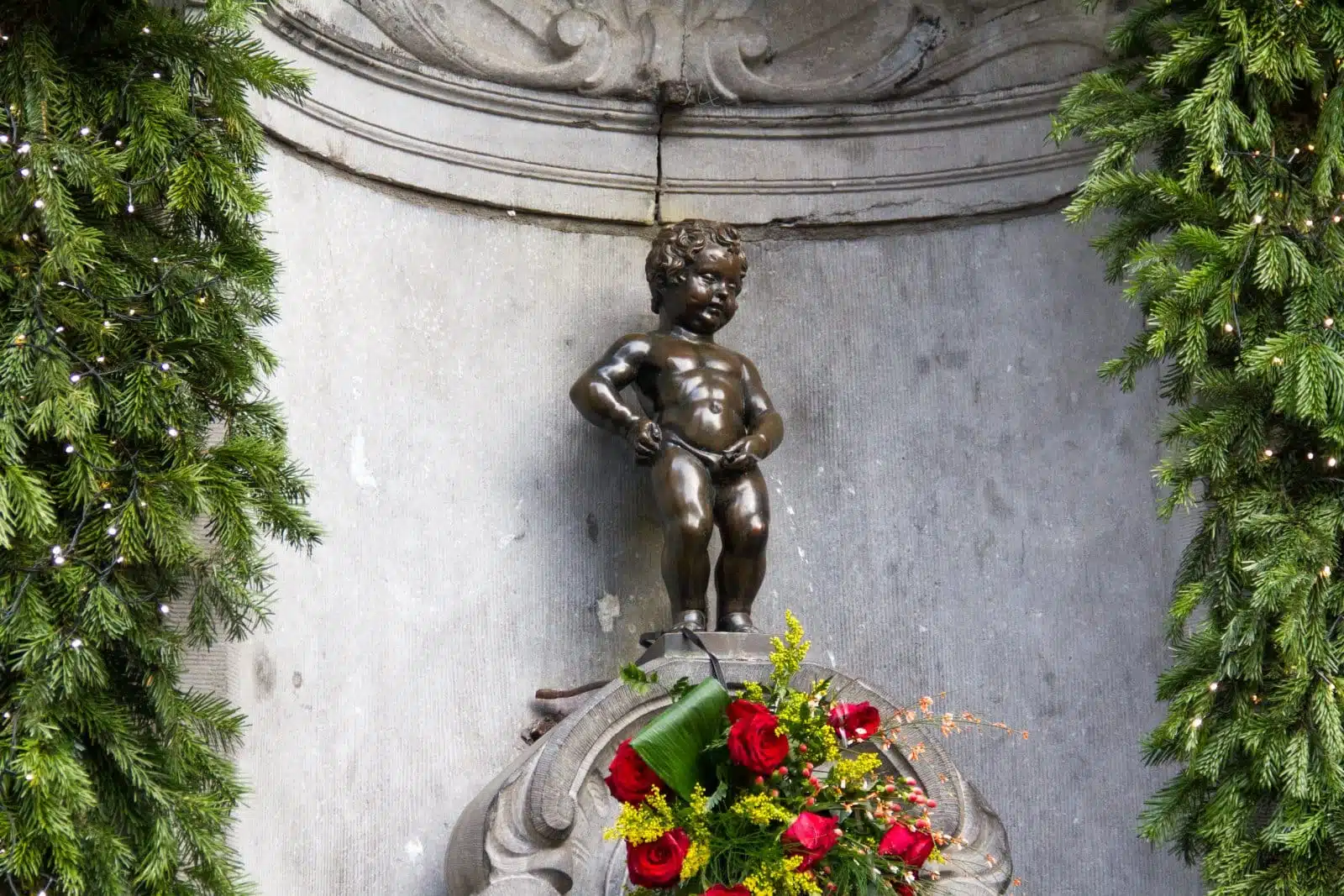
Image Credit: Shutterstock / Filippo Arena
The Manneken Pis, a small bronze statue of a boy urinating, has become an emblem of Brussels’ irreverent spirit. Located a short walk from the Grand Place, this quirky landmark is often dressed in costumes from its extensive wardrobe, reflecting different occasions, countries, and themes. The statue symbolizes the city’s folklore and has several legends associated with its origin, making it a must-visit for those looking to delve into Brussels’ cultural quirks.
Insider’s Tip: Check the schedule for when the statue will be dressed in a new costume – it’s a unique tradition that adds an extra layer of fun to your visit.
3. Atomium
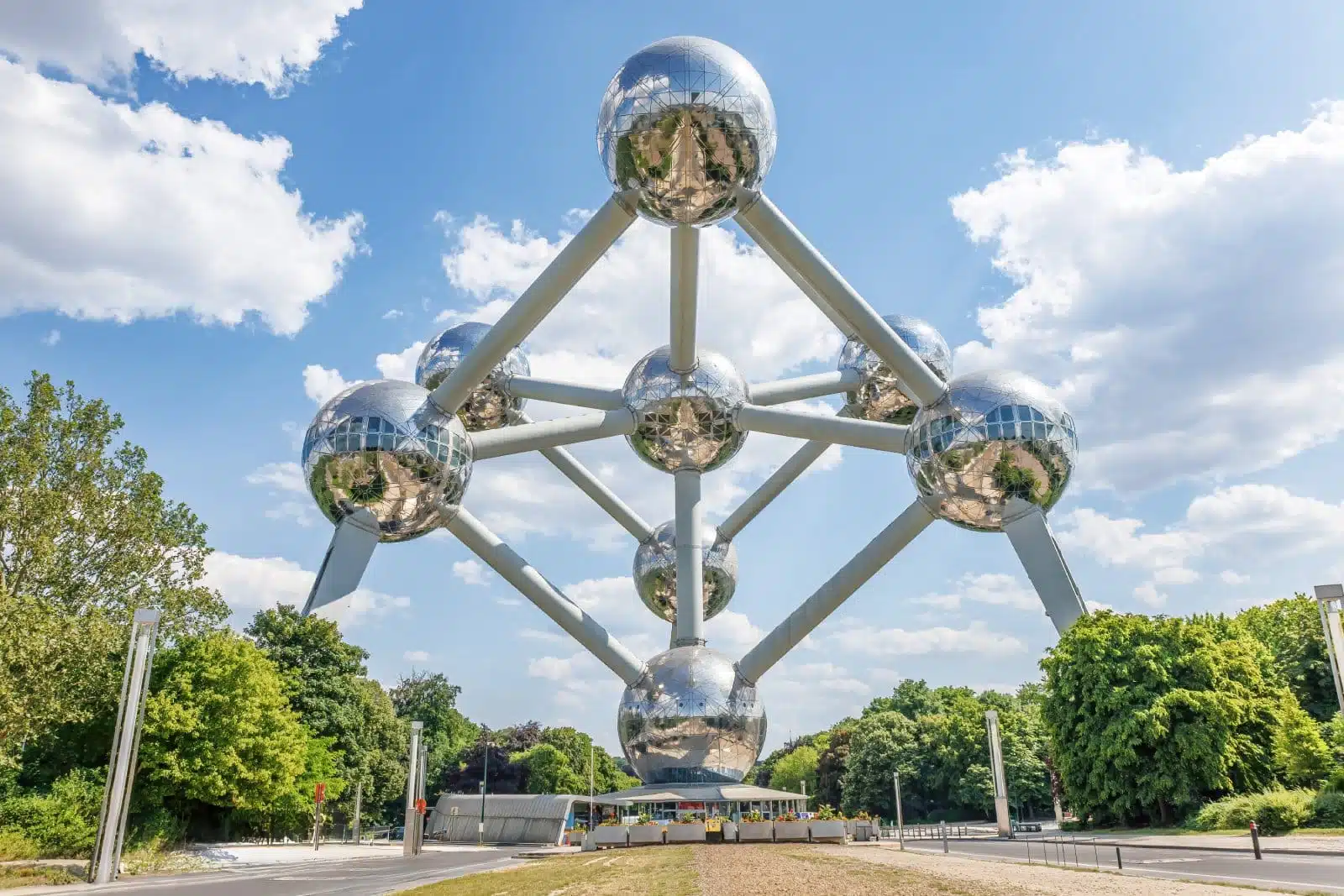
Image Credit: Shutterstock / agsaz
The Atomium, an iconic building and museum designed for the 1958 Brussels World’s Fair, represents an iron crystal magnified 165 billion times. This remarkable structure, consisting of nine interconnected spheres, offers panoramic views of the city from its top sphere and houses exhibitions related to science, design, and society. The Atomium symbolizes Belgium’s spirit of innovation and its pivotal role in the atomic age.
Insider’s Tip: For a unique experience, book a dinner in the Atomium’s restaurant located in the top sphere, offering stunning city views alongside your meal.
4. Royal Palace of Brussels
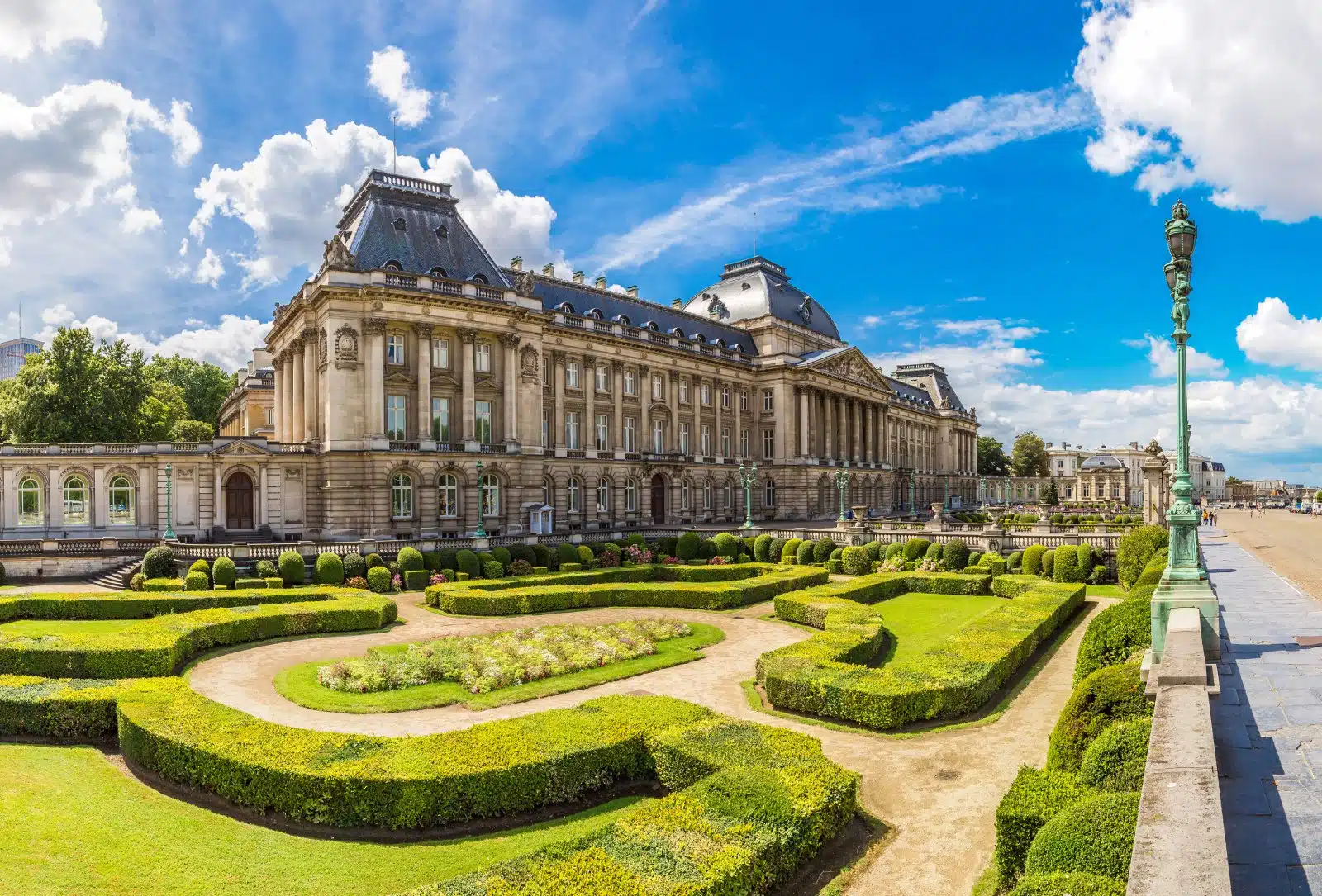
Image Credit: Shutterstock / Sergii Figurnyi
The Royal Palace of Brussels is a stunning example of neoclassical architecture and a symbol of the Belgian monarchy’s role in the state. While the royal family resides in the Palace of Laeken, the Royal Palace in the heart of Brussels is where the King exercises his duties as Head of State. The palace is open to the public during the summer months, offering a glimpse into the opulent state rooms where history and artistry combine to tell the story of Belgium’s royal heritage.
Insider’s Tip: Don’t miss the Mirror Room, especially the ceiling and chandelier adorned with green beetle wing cases, a unique piece of contemporary art by Jan Fabre.
5. Belgian Comic Strip Center
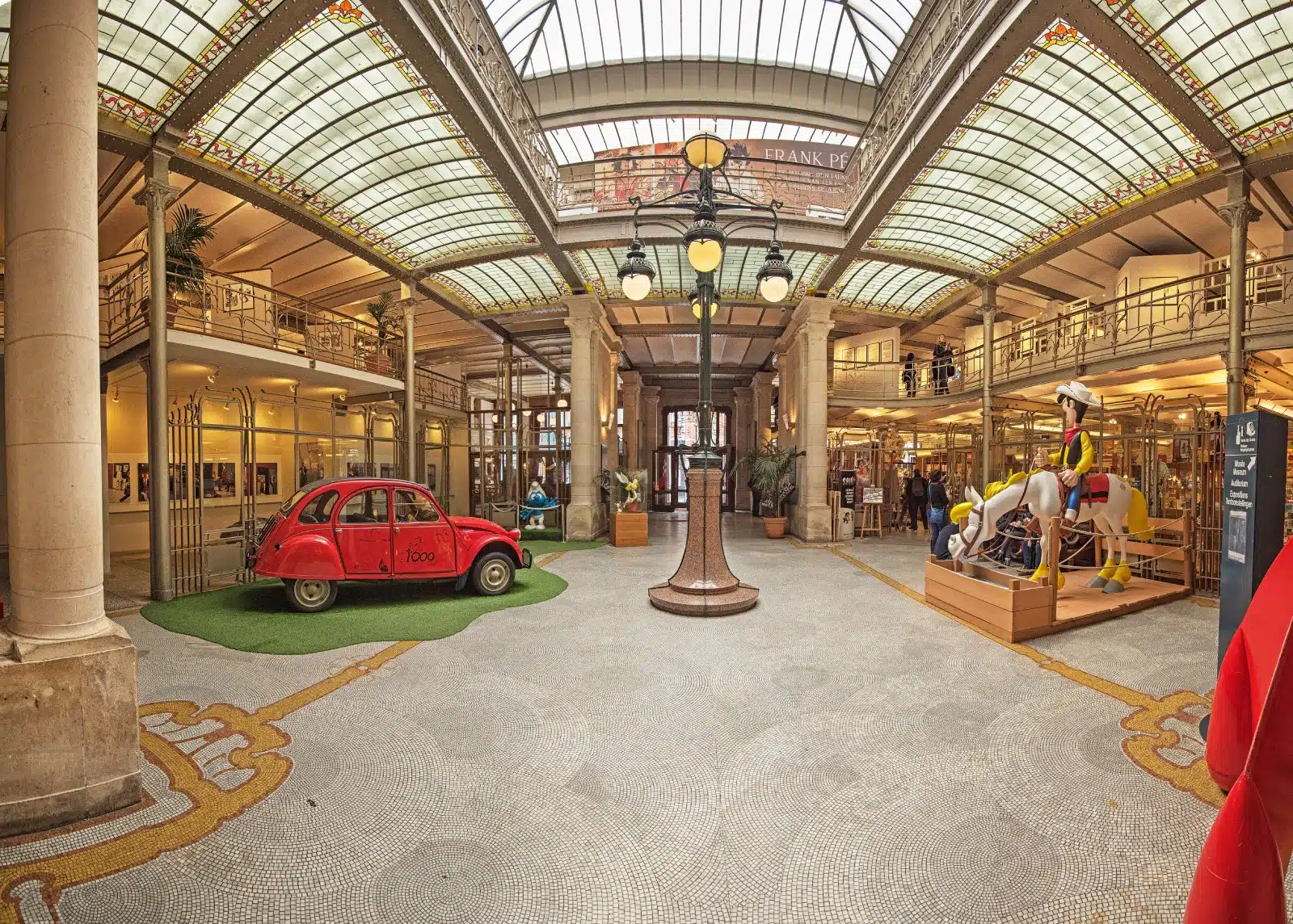
Image Credit: Shutterstock / Botond Horvath
Belgium has a rich tradition of comic strip art, with Brussels at its heart. The Belgian Comic Strip Center celebrates this unique aspect of Belgian culture in a beautiful Art Nouveau building designed by Victor Horta. The museum showcases the history of Belgian comics, from classic characters like Tintin and The Smurfs to contemporary works. It’s an engaging visit for art lovers and comic fans alike, offering insights into the process of comic creation and the stories behind Belgium’s most beloved characters.
Insider’s Tip: Check out the museum’s bookstore for a wide selection of comic books, including rare editions and works in multiple languages.
6. Magritte Museum
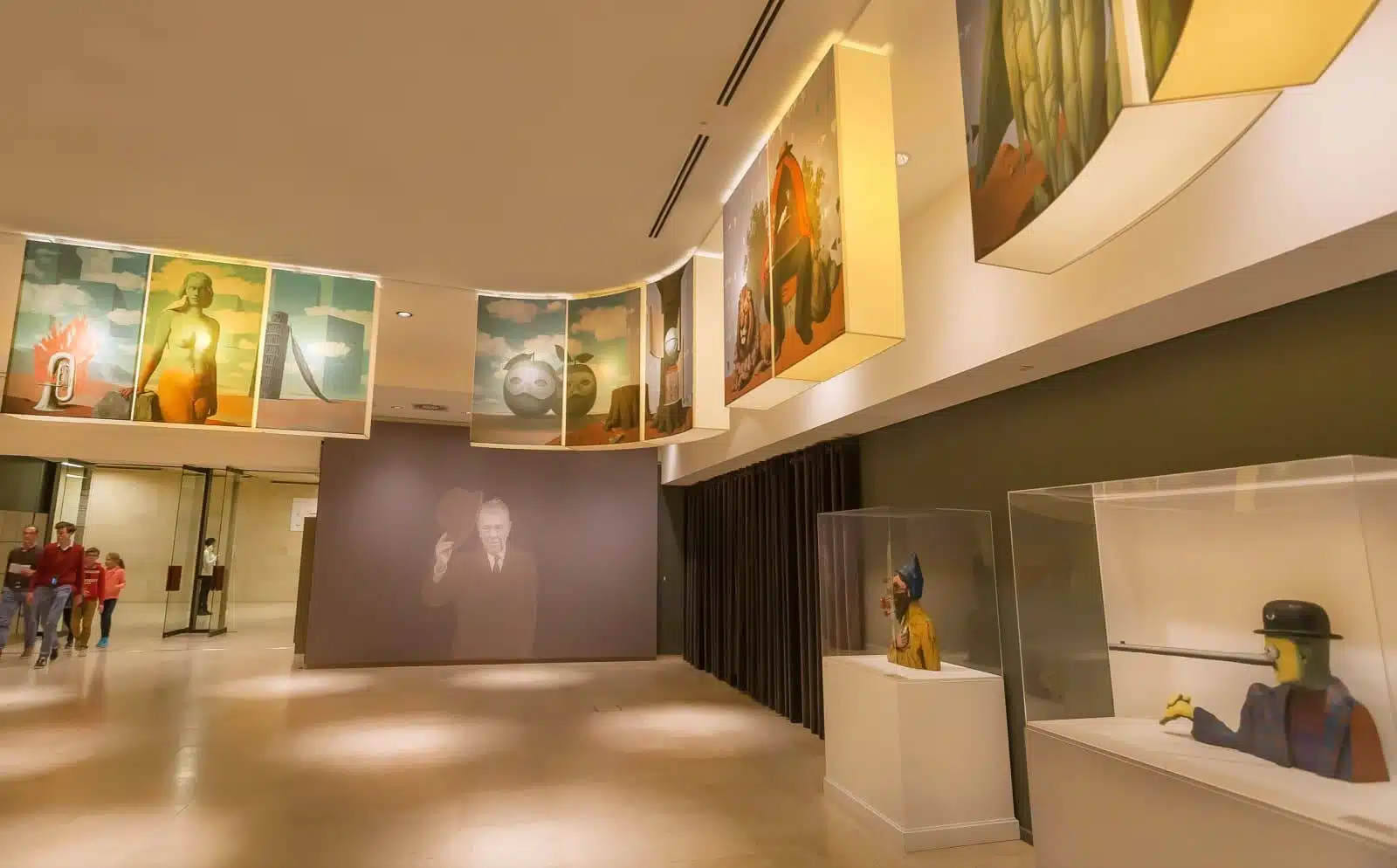
Image Credit: Shutterstock / Radiokafka
Dedicated to Belgium’s most famous surrealist, René Magritte, the Magritte Museum houses the world’s largest collection of his works. Located in the heart of Brussels, the museum offers an extensive look at Magritte’s paintings, drawings, and sculptures, providing a comprehensive overview of his career and artistic evolution. The museum is part of the Royal Museums of Fine Arts of Belgium, making it a must-visit for art enthusiasts exploring the city.
Insider’s Tip: After exploring the Magritte Museum, visit the nearby Royal Museums of Fine Arts to see works by other Belgian and international artists.
7. Parc du Cinquantenaire
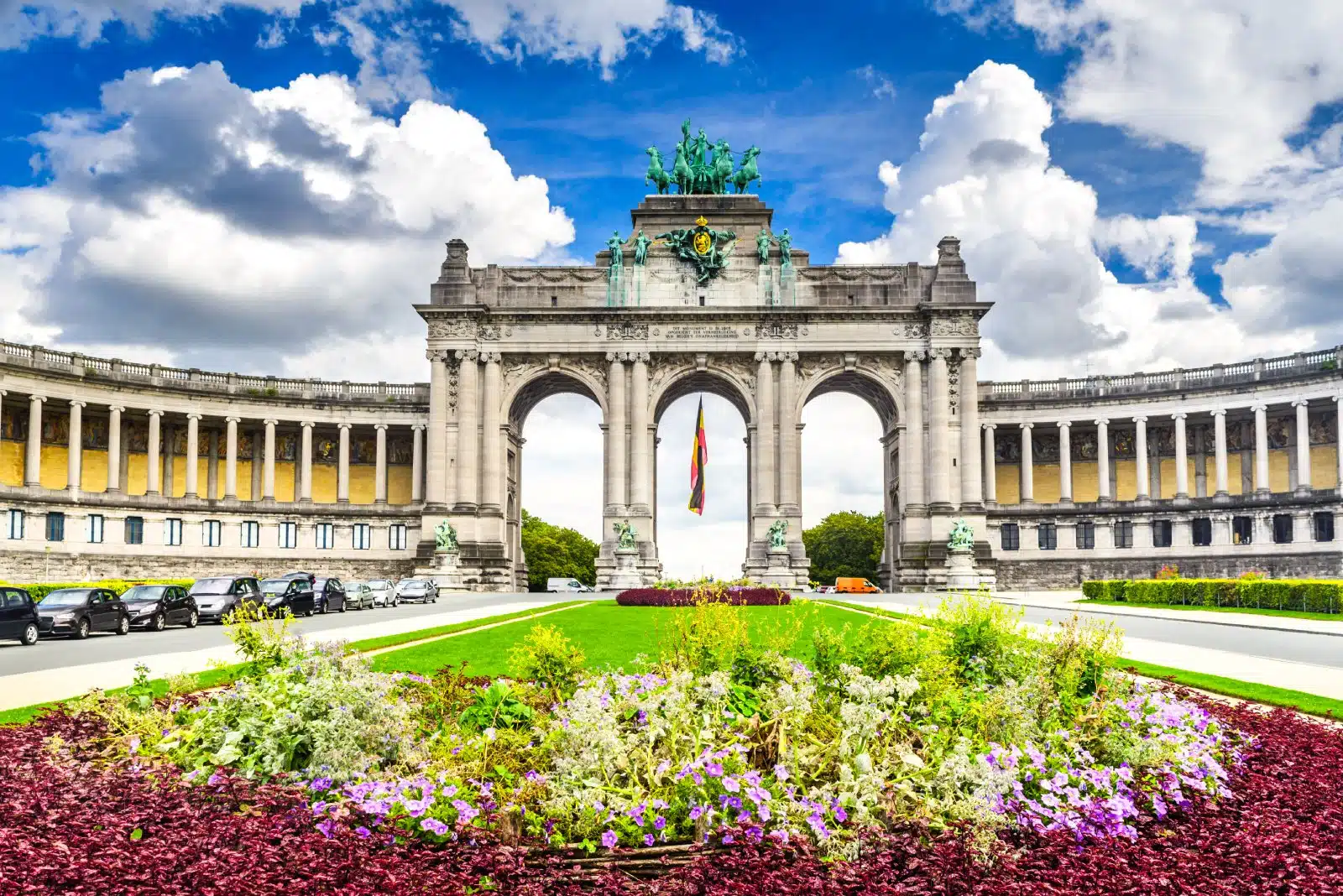
Image Credit: Shutterstock / ecstk22
Parc du Cinquantenaire, or Jubelpark, is not just a park but a national landmark in Brussels. Built to commemorate fifty years of Belgian independence, it features a grand arch and museums within its grounds, including the Royal Museum of the Armed Forces and Military History and the Art & History Museum. The park is a popular spot for locals and tourists, offering vast green spaces, picturesque gardens, and panoramic views from the top of the arch.
Insider’s Tip: Visit the Royal Museum of the Armed Forces and Military History for an impressive view of the park and the European Quarter from the top of the arch.
8. Place Royale (Koningsplein)
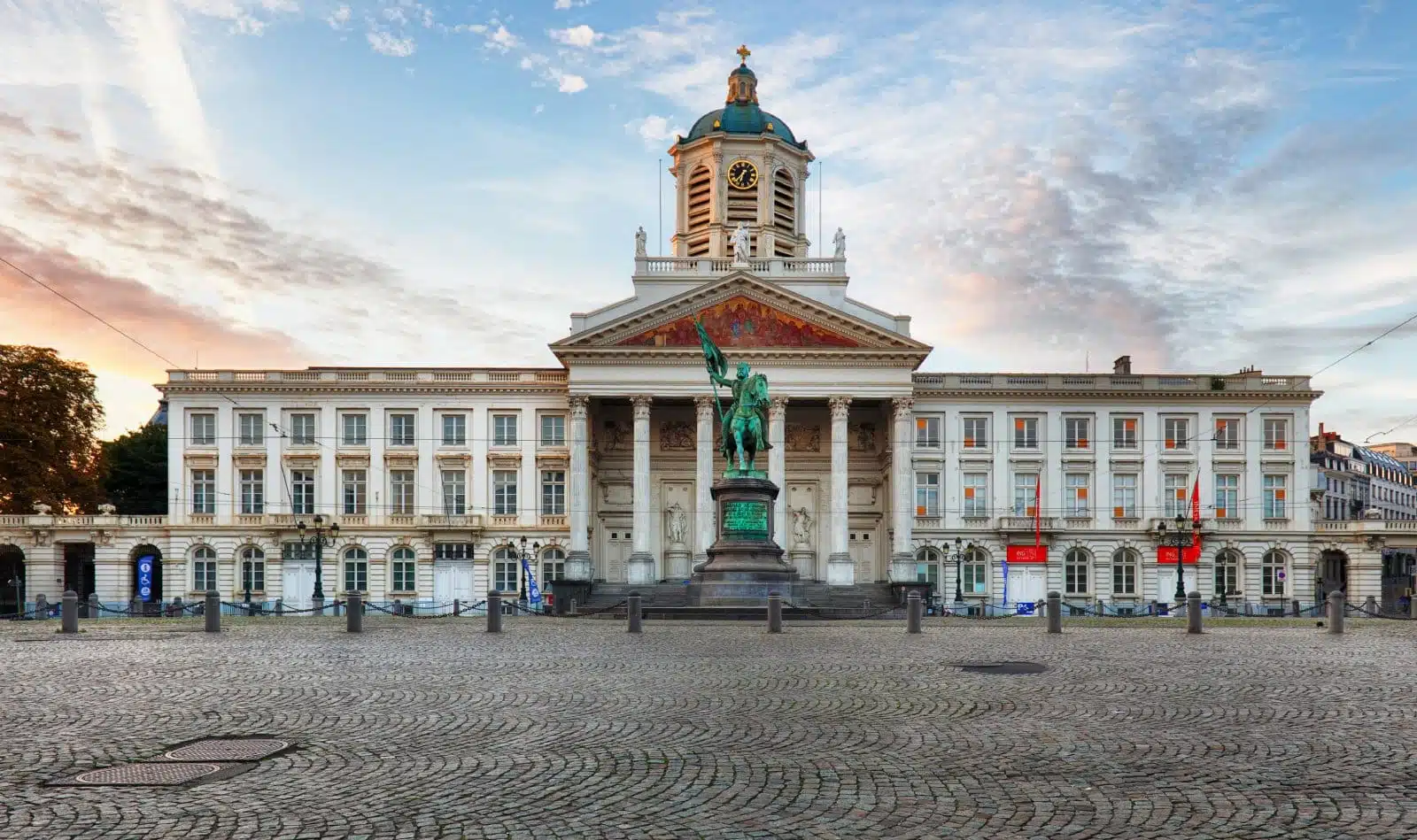
Image Credit: Shutterstock / TTstudio
Place Royale is a historic square located at the heart of Brussels’ royal and cultural district. Surrounded by neoclassical buildings, the square is a stone’s throw away from the Royal Palace, the Magritte Museum, and the Church of Saint Jacques-sur-Coudenberg. The square itself is a significant site, marking the spot where the medieval palace of Coudenberg once stood.
Insider’s Tip: Explore the Coudenberg Palace archaeological site beneath the square to discover the remnants of Brussels’ medieval past.
9. Mont des Arts
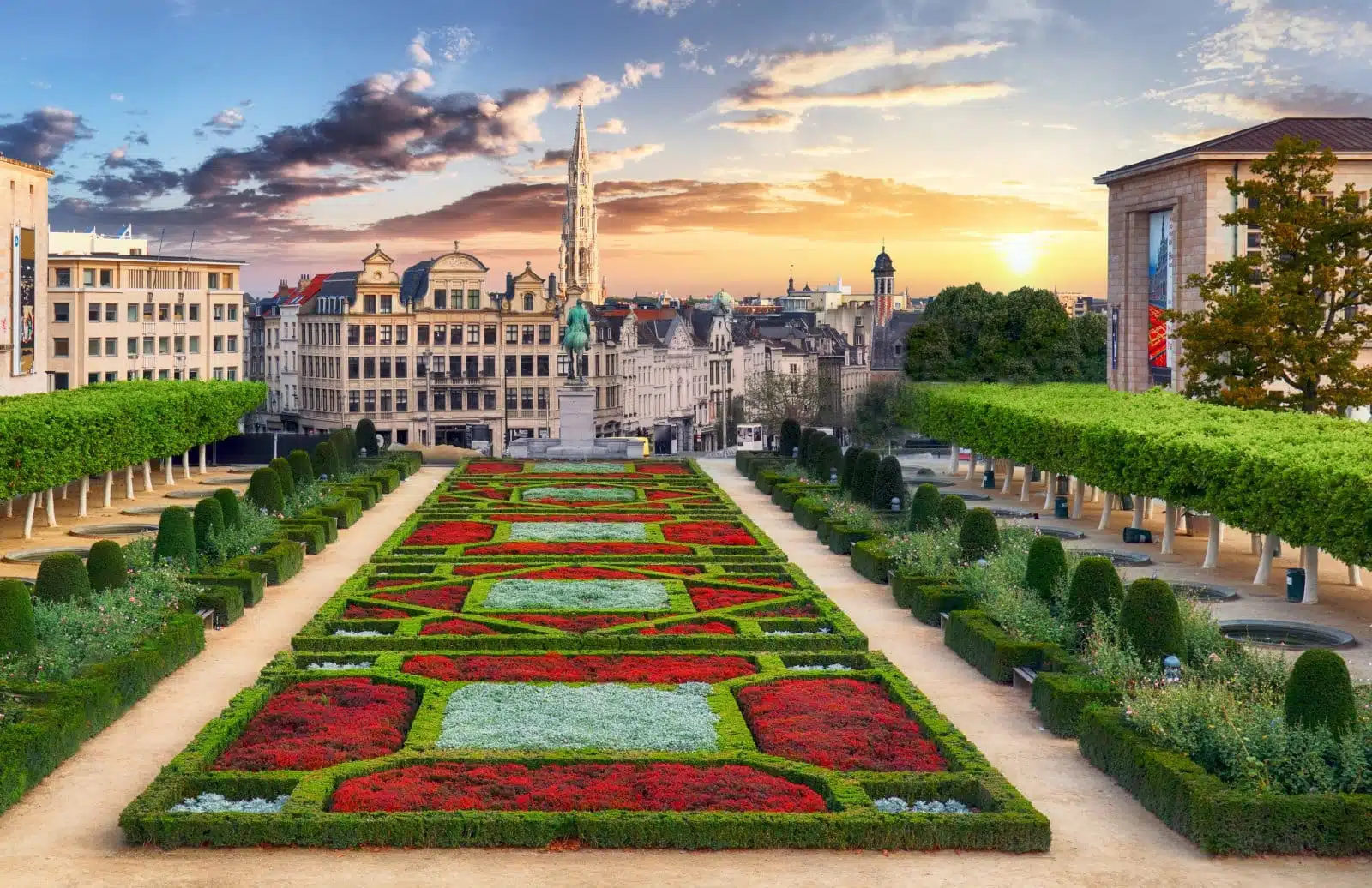
Image Credit: Shutterstock / TTstudio
Mont des Arts offers one of Brussels’ most iconic views, stretching from the Royal Library of Belgium to the Place Royale. This cultural hub, developed in the early 20th century, is home to several key institutions, including the Royal Museums of Fine Arts of Belgium and the Musical Instruments Museum. The area is a testament to Belgium’s dedication to arts and culture, offering a panoramic vista that captures the essence of Brussels.
Insider’s Tip: Visit at sunset for a breathtaking view of the city skyline against the backdrop of the setting sun.
10. Saint-Michel Cathedral
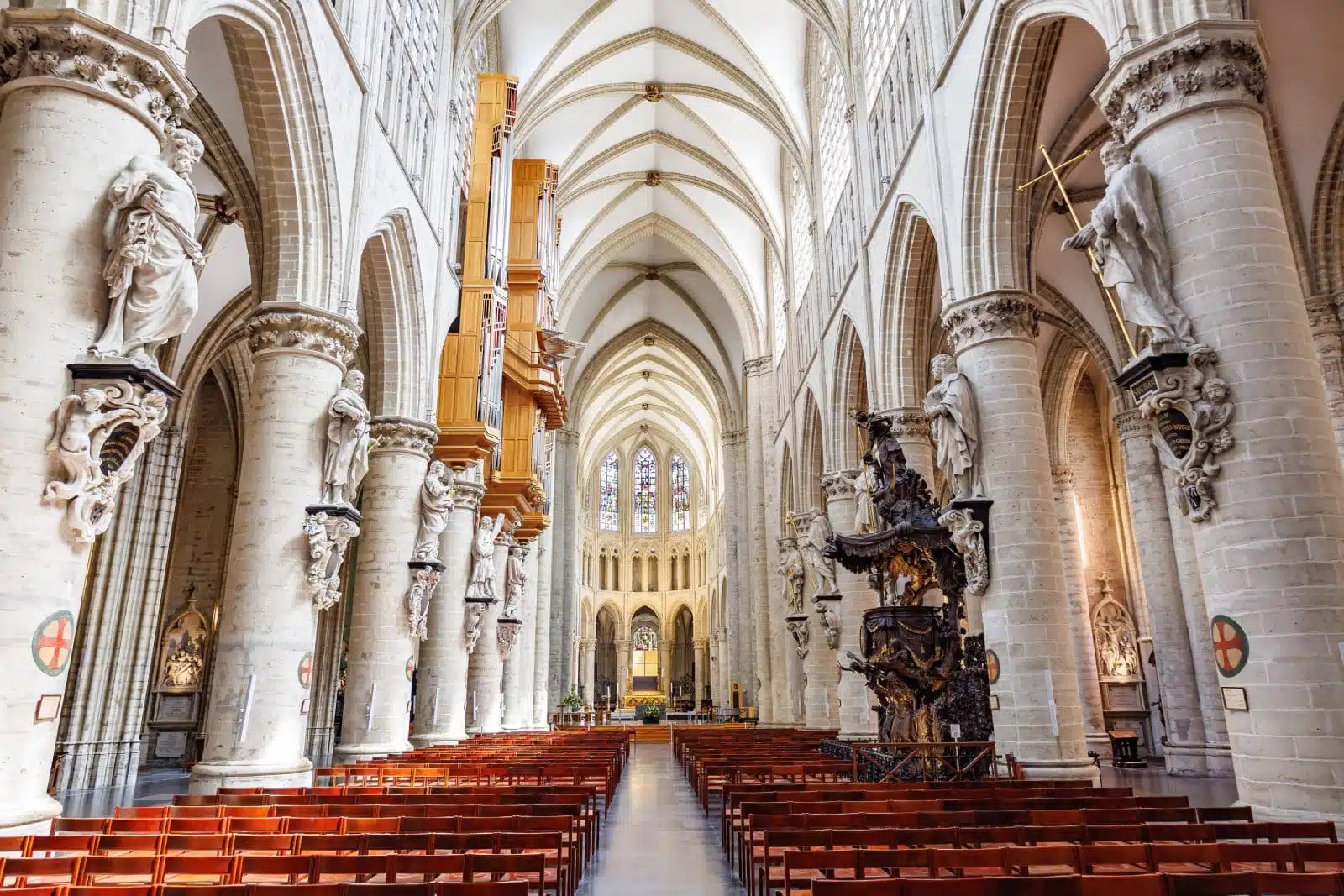
Image Credit: Shutterstock / agsaz
The Cathedral of St. Michael and St. Gudula, a Gothic masterpiece, has been a site of Christian worship for over a thousand years. The cathedral, with its impressive facade, stained glass windows, and soaring vaults, is beautiful and tranquil in the bustling city. It has been the venue for royal weddings and funerals, linking it closely to the Belgian monarchy.
Insider’s Tip: Attend a concert or organ recital in the cathedral to experience its outstanding acoustics and atmospheric setting.
11. Bois de la Cambre
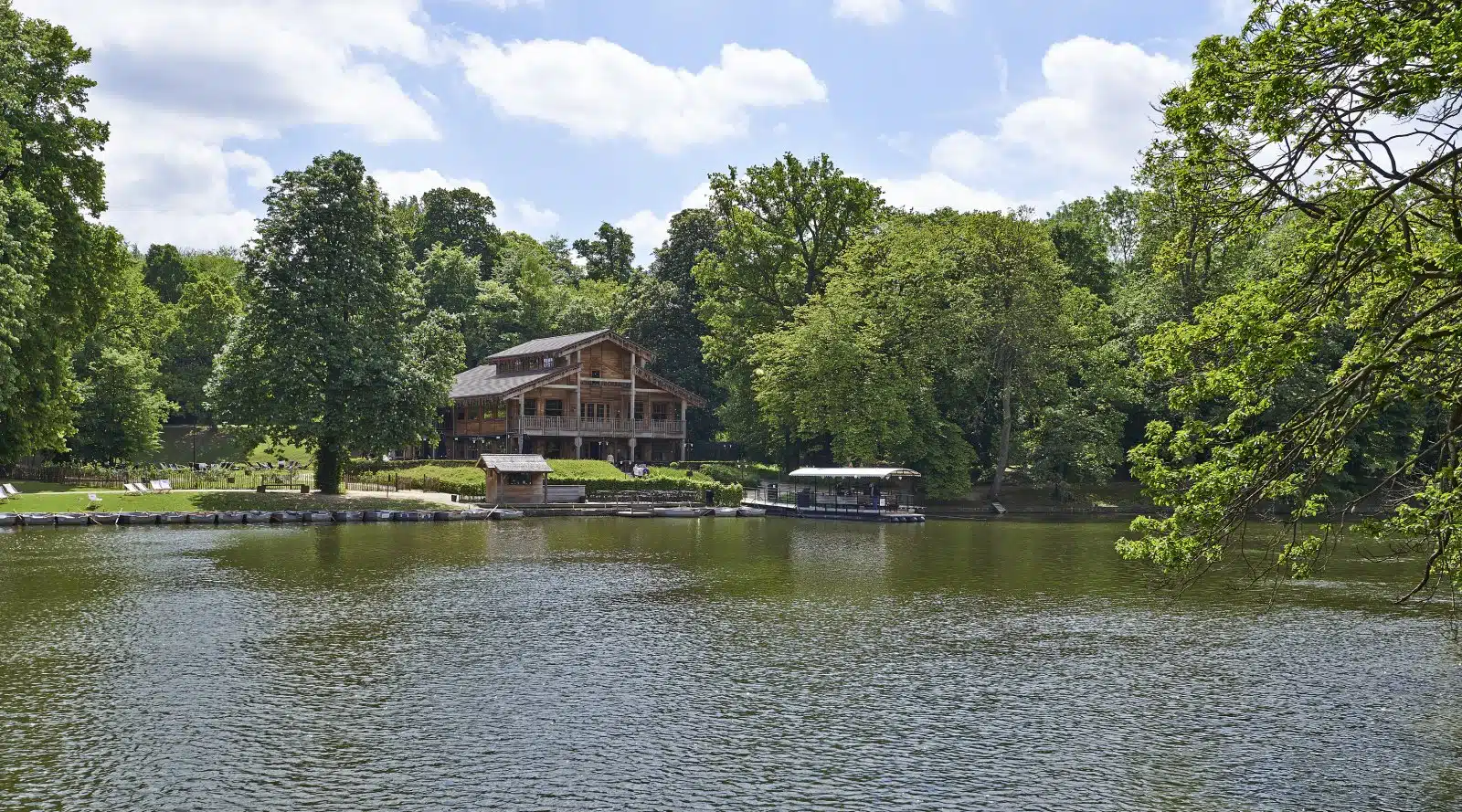
Image Credit: Shutterstock / CapturePB
On the edge of the Sonian Forest, Bois de la Cambre is a sprawling public park that offers a tranquil escape from the urban hustle of Brussels. With its picturesque lake, where you can rent rowboats, and numerous walking paths, it’s a favorite among locals for picnics, jogs, and leisurely strolls. The park also hosts various events throughout the year, from open-air concerts to family-friendly activities, making it a versatile destination for relaxation and entertainment.
Insider’s Tip: Visit the Chalet Robinson, a charming café-restaurant located on an island in the park’s lake, accessible by a small ferry. It’s a perfect spot for a leisurely lunch or a refreshing drink with scenic views.
12. Mini-Europe
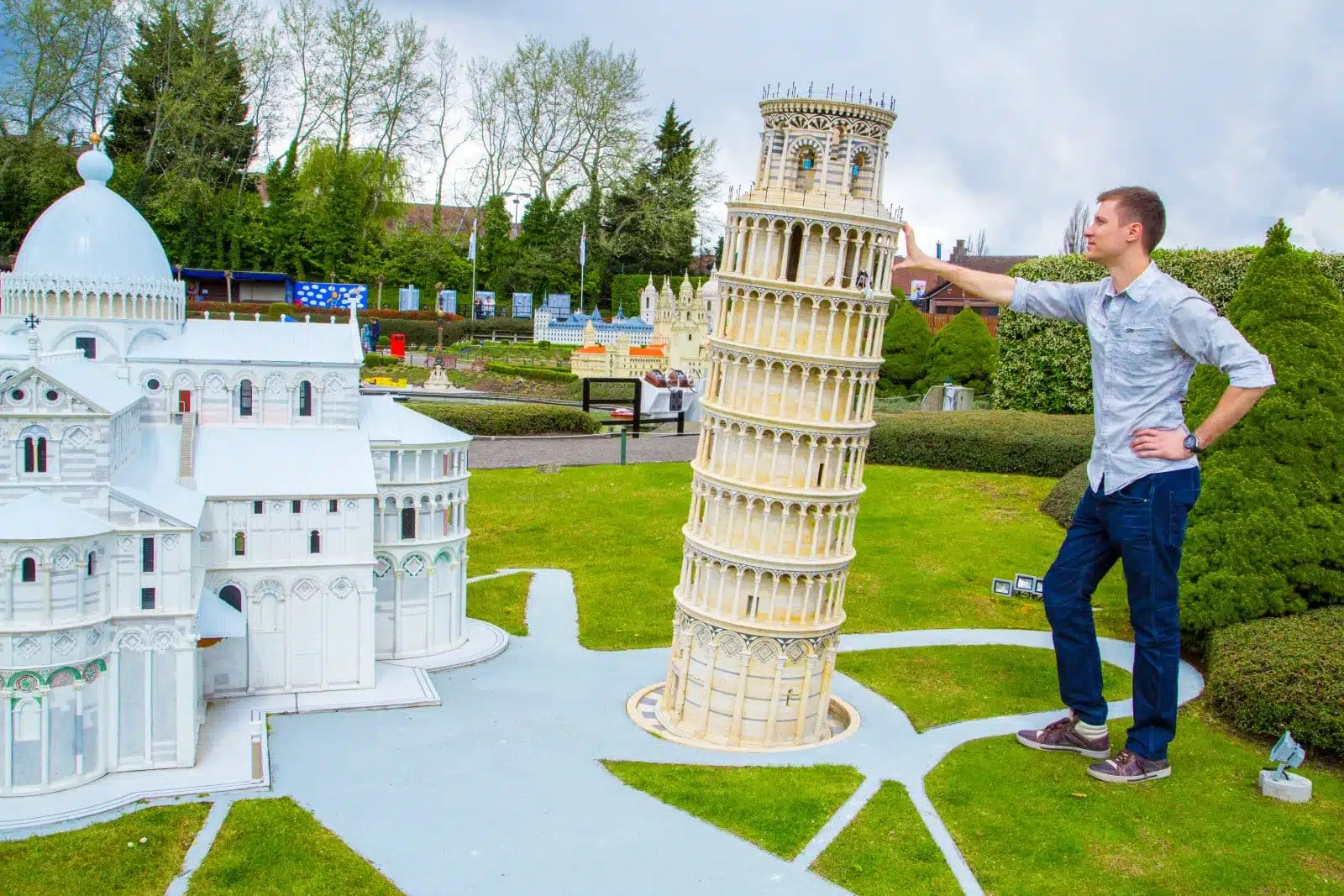
Image Credit: Shutterstock / Pandora Pictures
Located at the foot of the Atomium, Mini-Europe is a miniature park featuring reproductions of the most famous landmarks in the European Union at a scale of 1:25. It’s an educational and entertaining walk through the continent, offering a unique perspective on Europe’s architectural diversity. Each model is meticulously crafted, and the park includes interactive exhibits that bring the history and culture of Europe to life.
Insider’s Tip: Don’t miss the live demonstrations, such as the eruption of Mount Vesuvius or the fall of the Berlin Wall, which add an engaging, dynamic element to the visit.
13. Royal Greenhouses of Laeken
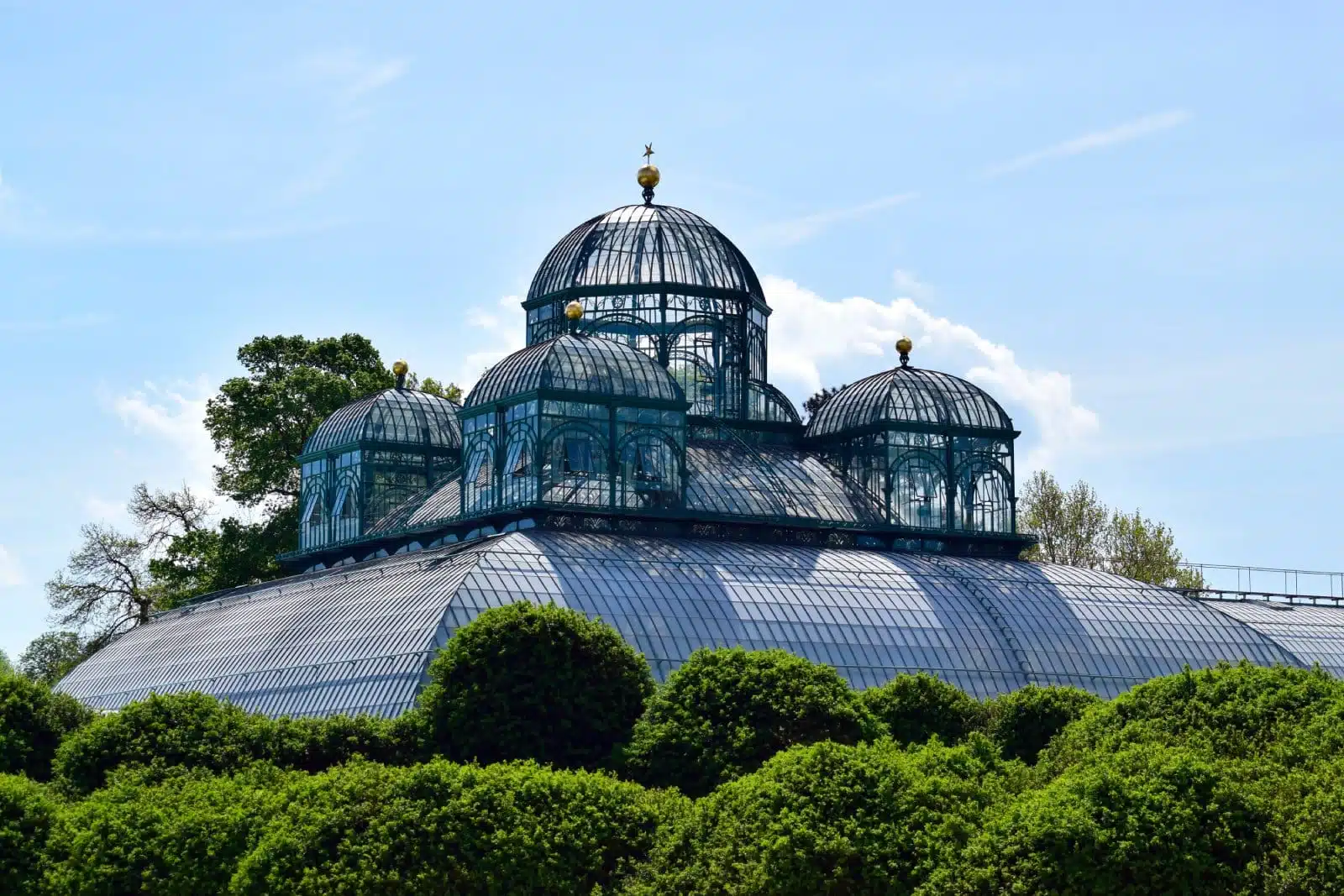
Image Credit: Shutterstock / Mali lucky
The Royal Greenhouses of Laeken are a complex of monumental greenhouses in the grounds of the Royal Castle of Laeken, the official residence of the Belgian Royal Family. Built in the 19th century, these steel and glass structures house a vast collection of exotic plants, many of which are over a century old. The greenhouses are open to the public for a few weeks each spring, offering a rare glimpse into the royal estate’s botanical treasures.
Insider’s Tip: Plan your visit during the public opening period in the spring to witness the blooming of the flowers and plants, a spectacular sight that attracts visitors from around the world.
14. Belgian Chocolate Village
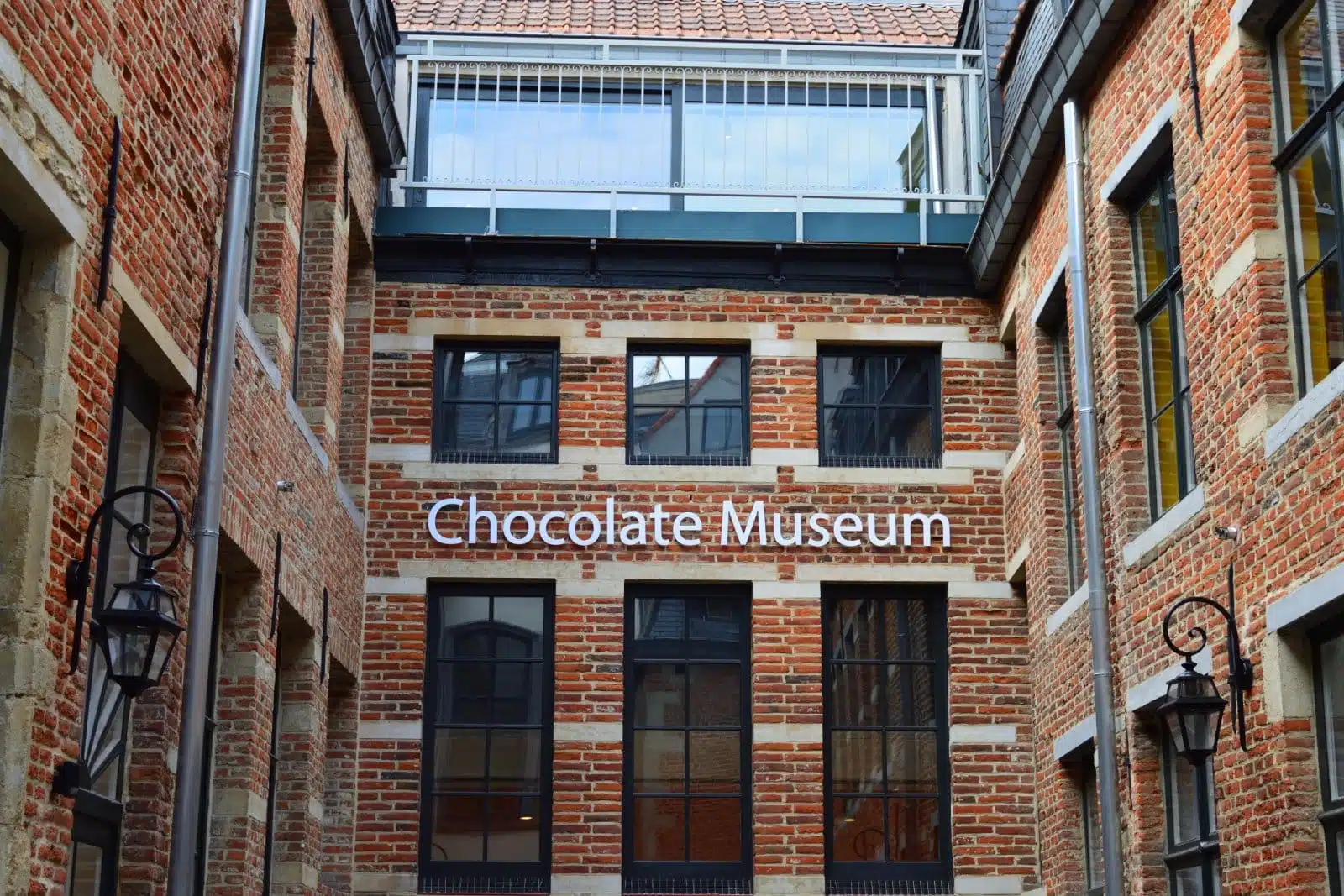
Image Credit: Shutterstock / Christophe KLEBERT
The Belgian Chocolate Village in Koekelberg is one of Belgium’s largest museums dedicated to chocolate. The museum explores the history of chocolate, from its origins to its production processes, and highlights the role of Belgian chocolatiers in elevating chocolate to an art form. Visitors can enjoy interactive exhibits, chocolate-making demonstrations, and tastings of various chocolate products.
Insider’s Tip: Participate in a chocolate-making workshop offered by the museum to learn the secrets of crafting fine Belgian chocolates from expert chocolatiers.
When to Travel

Image Credit: Shutterstock / GP PIXSTOCK
The best time to visit Brussels largely depends on your preferences for weather and activities, but generally, the most favorable periods are:
Spring (March to May): The weather starts to warm up, and the city’s parks and gardens come to life with spring blooms. This season offers a pleasant climate for exploring outdoor attractions and experiencing the vibrant colors of the city.
Autumn (September to November): Similar to spring, autumn provides mild weather and fewer crowds. The city’s foliage turns into beautiful shades of orange and red, offering picturesque views, especially in its parks.
Summer (June to August): While this is the peak tourist season, characterized by warmer weather and numerous festivals, it’s also when the city is most crowded. If you don’t mind the bustle and are interested in experiencing Brussels’ lively summer events, this is the time to visit.
Winter (December to February): Brussels is colder and days are shorter, but the city’s Christmas markets and festive lights create a magical atmosphere worth experiencing if you don’t mind the chill.
How to Get There

Image Credit: Shutterstock / Jacob Lund
By Air: Brussels is served by two main airports: Brussels Airport (Zaventem) and Brussels South Charleroi Airport. Brussels Airport is the largest and most international of the two, located about 12 kilometers northeast of the city center. It offers a wide range of European and intercontinental flights. The airport is well-connected to the city by train, bus, and taxi services. The train, known as the Airport Express, runs every 15 minutes to Brussels Central Station, with a journey time of about 20 minutes.
Brussels South Charleroi Airport is located about 50 kilometers south of Brussels and primarily serves low-cost carriers. Direct bus services from the airport to Brussels Midi Station take approximately an hour.
By Train: Brussels is a major rail hub in Europe, making it easily accessible by train from many European cities. The city has three main train stations: Brussels North, Brussels Central, and Brussels Midi, with Brussels Midi serving as the principal station for international trains, including Eurostar services from London, Thalys services from Paris, Amsterdam, and Cologne, and ICE trains from Germany.
By Road: Brussels is well-connected by an extensive network of highways, making it easily accessible by car or long-distance bus from neighboring countries. Several international bus companies, such as FlixBus and Eurolines, offer services to Brussels from major European cities. Remember that parking in the city can be challenging and expensive, so using public transport or park-and-ride facilities on the city’s outskirts might be more convenient for exploring the city center.
The Bottom Line
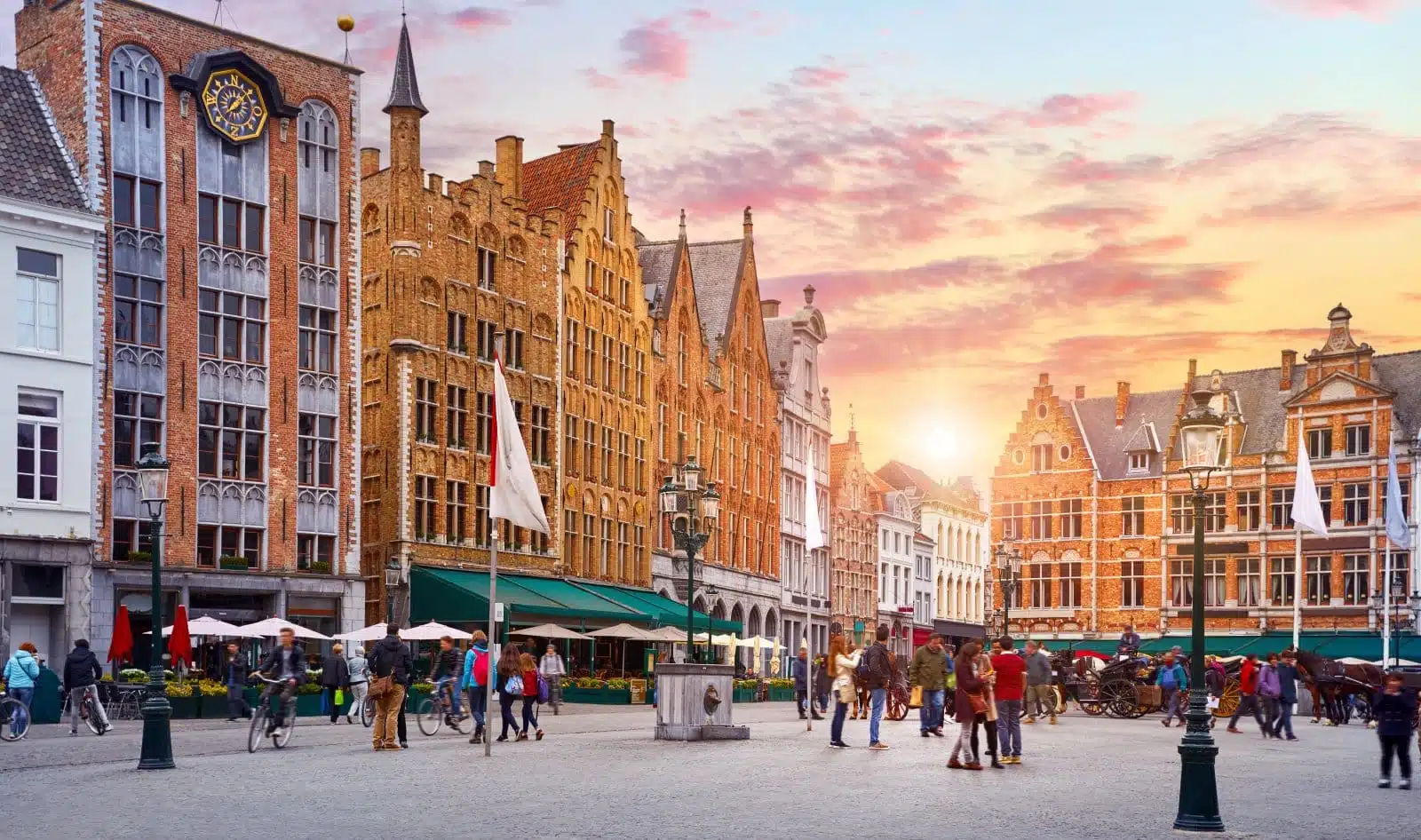
Image Credit: Shutterstock / Yasonya
Brussels is a city that captivates with its blend of historical grandeur, artistic creativity, and culinary excellence. From the serene beauty of Bois de la Cambre to the innovative spirit of the Atomium and the indulgent delights of the Belgian Chocolate Village, Brussels offers a rich tapestry of experiences. As you explore its streets, parks, and museums, you’ll discover a city deeply rooted in its traditions and boldly looking toward the future. Whether you’re seeking cultural immersion, architectural wonders, or the pleasure of fine chocolate and beer, Brussels welcomes you with open arms and promises of unforgettable moments.
More From The Green Voyage
12 Best Practices for Sustainable Travel in 2024 – How to Travel With Minimal Environmental Impact
Unlocking Hotel Perks – A Traveler’s Guide to Maximizing Hotel Reward Programs for Optimal Benefits
Travel Hacks for Frequent Flyers – 6 Tips and Tricks to Make the Best of Air Travel
The post A City Guide to Brussels, Belgium first appeared on The Green Voyage.
Featured Image Credit: Shutterstock / ecstk22.
For transparency, this content was partly developed with AI assistance and carefully curated by an experienced editor to be informative and ensure accuracy.
Tips for Trip Success
Book Your Flight
Find an inexpensive flight by using Kayak, a favorite of ours because it regularly returns less expensive flight options from a variety of airlines.
Book Your Hotel or Special Accommodation
We are big fans of Booking.com. We like their review system and photos. If we want to see more reviews and additional booking options, we go to Expedia.
You Need Travel Insurance!
Good travel insurance means having total peace of mind. Travel insurance protects you when your medical insurance often will not and better than what you get from your credit card. It will provide comprehensive coverage should you need medical treatment or return to the United States, compensation for trip interruption, baggage loss, and other situations.Find the Perfect Insurance Plan for Your Trip
